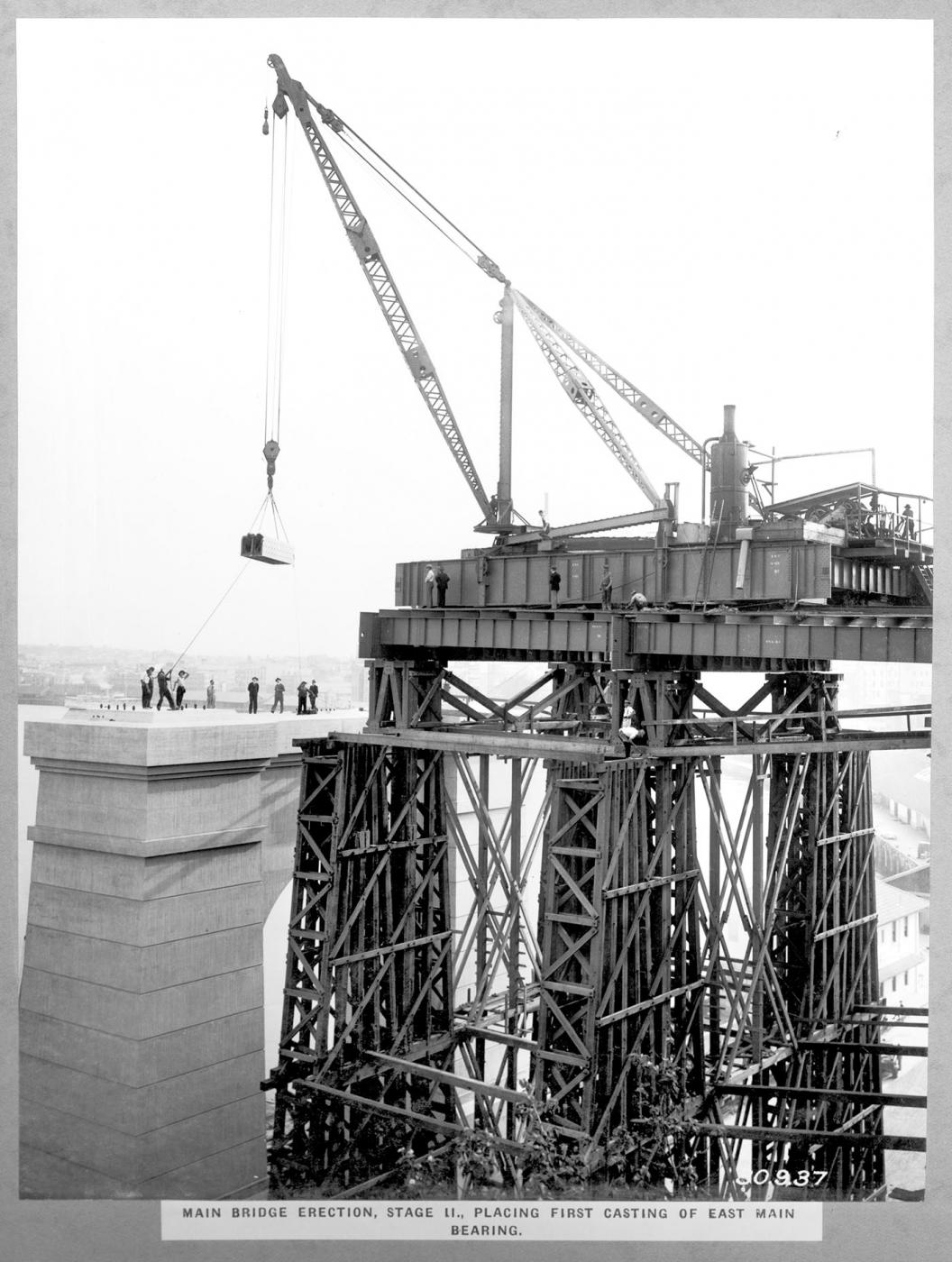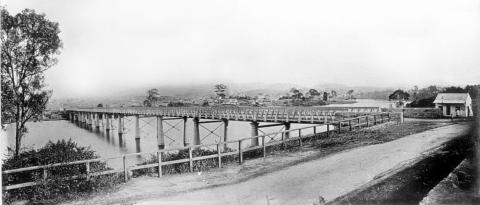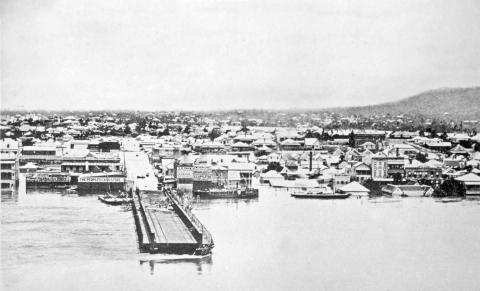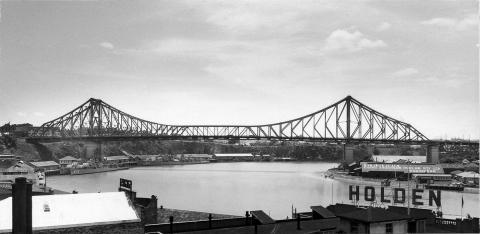
- News of the day
-
Telegraph, Monday 31 May 1937, page 1
One of Most Hazardous Chapters in Story Bridge Construction Completed
Air lock work on the Story Bridge was completed on Saturday morning and the concrete is being poured into the second caisson to-day. The work probably will be completed to-night. Thus closes one of the most hazardous and technically difficult chapters of the bridge construction.
At times the men worked at a pressure as high as 57 lb. per square Inch above normal atmospheric pressure.
In spile of the fact that this work was carried out at far greater depths than was the case on the Grey Street Bridge, and at higher pressures, there have been practically no resultant illnesses amongst the men employed, only sickness of a trivial nature being encountered.
The complete data of this air lock work will be carefully compiled and published in engineering journals.
When all the cement is in position in the second caisson the foundational work on the bridge will have been completed. The two caissons contain between 8,000 and 10,000 tons of concrete.
The completion of this work paves the way for an advance on the erection of steel and the building of the 100 foot piers which will buttress the southern end of the bridge.
- Background
-
This steel and concrete cantilevered bridge was constructed between 1935 and 1940 by contractors Evans Deakin-Hornibrook for the Queensland Government.
As early as January 1926 the Greater Brisbane Council's Cross River Commission had recommended the construction of a bridge at Kangaroo Point. Due to sectarian interests and prohibitive costs, however, the council chose instead to erect the Grey Street Bridge in 1929-32.
In 1933 the new Queensland Labor Government amended the Bureau of Industry Act, permitting the establishment of a Bridge Board chaired by JR Kemp, Commissioner for Main Roads, to plan a government-constructed toll bridge at Kangaroo Point.
Premature in terms of traffic requirements, the bridge was promoted as an employment-generating scheme. It was one of three such projects undertaken by the Queensland Government in the mid-1930s, the others being the Stanley River Dam and the University of Queensland campus at St Lucia.
Dr JCC Bradfield, designer of the Sydney Harbour Bridge, was appointed consulting engineer on 1 January 1934. He chose JA Holt as supervising engineer for the design of the bridge and supervision of the contract. Design and site surveys were undertaken in 1934.
Although modelled on the Montreal Harbour Bridge, completed in 1930, Bradfield emphasised that the grey steel elevation of the bridge was designed to harmonise with Brisbane's natural skyline.
Tenders for the Kangaroo Point Bridge were called in January 1935. The contract was let to Evans Deakin-Hornibrook Constructions Pty Ltd, with a price of £1,154,000, and construction commenced in May.
The Story Bridge remains the largest steel bridge designed and built mostly by Australians from Australian materials. Approximately 95 per cent of the materials used were of Australian manufacture, and 89 per cent of the cost of works was expended in Queensland.
All the steelwork, approximately 12,000 tonnes, was fabricated at the Rocklea workshop of Evans, Deakin & Co. Ltd. One truss of each type of approach span, and all joints of the main bridge, were assembled at the workshop then dismantled before removal, ensuring there were no difficulties in erecting the steelwork on site.
The concrete work and erection of the superstructure was carried out on site by the MR Hornibrook organisation.
The bridge was constructed simultaneously from both ends, with the main piers erected first. Excavations for the southern pier necessitated men working in watertight airlock chambers within steel caissons up to 40 metres below ground level. This was the deepest airlock work done in Australia at the time.
The approach spans were erected by a hammer-head crane operating along a runway. Then the anchor-cantilever trusses were erected in five stages using a 40 tonne derrick crane running on a temporary track on the bridge deck. Finally the bridge was closed using a system of wedge devices inserted in the top and bottom chords of each truss at the ends of the suspended span.
During 1938, which was the busiest period of construction, close to 400 persons were employed in the workshops, offices and on site.
From mid-1935 to 1940 the bridge was known as the Jubilee Bridge, honouring George V, but when opened on 6 July 1940 it was named after JD Story, the Public Service Commissioner and a member of the Bridge Board. The designer and the chairman of the Bridge Board were honoured in the naming of the southern approach viaduct as the Bradfield Highway and the northern approach as Kemp Place.
Although an engineering success, the bridge was regarded initially as a white elephant, the toll being unpopular and the traffic demand negligible. Not until the arrival of American troops in 1942 was the Story Bridge fully utilised. Nevertheless, the final cost of £1.6 million was recuperated within seven years, and in 1947 the bridge was transferred to the Brisbane City Council and the toll was removed.
The Story Bridge has become one of Brisbane's most widely recognised landmarks. Its illumination, carried out by SEQEB in time for the 1986 Warana festival, reflects its unique status as a symbol of the city.
Courtesy of Queensland Heritage Register
/153.036651,-27.4618923,7/450x450@2x.png?access_token=pk.eyJ1IjoicXNhLWRpc2NvLXFsZCIsImEiOiJjamJmdTgyZXEyeWNjMnlxZm8xcmtieHgxIn0.lmT9J5tTPKGuuccQgCVSAg)



